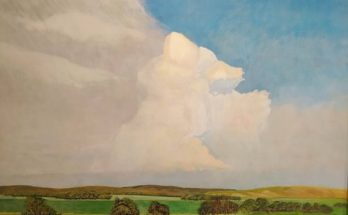By Martina Prokopova
This joint exhibition will unite five countries from both sides of the Atlantic— Mexico, and the four members of the Visegrad Group: Slovakia, Czech Republic, Poland, and Hungary. The event will be held at the seat of the Casa de Europa Foundation in San Miguel de Allende during the period of the Slovak Pro-Tempore Presidency of the Visegrad Group. Starting October 6 and lasting for one month, this international exhibition will give all art fans the opportunity to see their home—Mexico—through the eyes of European artists. The inauguration of the exhibition, «Mexico as Seen Through the Art of Visegrad Group,» will be attended by the ambassadors of the four European countries as well as by the authorities of the State of Guanajuato and the City of San Miguel.
Mexico has always been a great inspiration for Europeans because they find Mexico very exotic, colorful, and the different ethnic groups totally fascinating. Traces of pre-conquest Mexican civilizations currently remain part of Mexican culture: for example, the aesthetic qualities of the human body, the architectural proportions, the flavors of the cuisine, the rhythms of the music, and the traditional arts and crafts which are still alive today. Many people in Europe are also inspired by pre-Columbian Mexican philosophy, for example, Toltec wisdom. They are also interested in shamanism, as little of this knowledge and fewer traditions have been preserved in Europe. The Christian faith gradually spread throughout Europe at the beginning of our era, in other words, from the year 1AD. All these reasons inspire Europeans to travel to Mexico, where they seek emotional healing or the sacred ancestral teachings of life. Coming to Mexico can mean breaking their traditional emotional boundaries and intellectual concepts, and feeling the freedom of their own identity for an indefinite moment in time.
The exhibition «Mexico as Seen Through the Art of the Visegrado Group» is, to a great extent, a demonstration of Central Europeans’ perception of Mexico. Three of the artists currently live in Mexico and their respective artistic techniques are an expression of the need to break down the boundaries of the visible and the tangible, and reconstruct it in a new way. Alexandra Šamková, from Slovakia, calls her technique «the therapy of color» and in her paintings she uses splashes of color which have the effect of erasing concrete forms though the forms can be seen from a distance.
In the works of Tatjana Jandová, from the Czech Republic, viewers will be able to find their own vision of what inhabits their unconscious imagination. Moreover, part of her cycle of animals in danger of extinction has its origins in Mexican fauna.
Magdalena Firląg, of Poland, who, among other things, is also a perfomer, will exhibit her abstract paintings and glass mosaics which express the rebirth of matter and the syncretism which combines the Old Continent with the New World.
On behalf of Hungary, the work of Miksa Róth, the extraordinary mosaicist and stained-glass window creator from the time of the change between the 19th and 20th centuries, will be presented. His stained-glass windows embellish one of our national symbols, namely, the Palacio de Bellas Artes in Mexico City.
The Slovkian, Czech, Polish, and Hungarian embassies and the Casa de Europa Foundation would like to extend a warm invitation to come and enjoy this presentation of Central European Art with a Mexican flair which will remain on view from October 6 to November 5.
Inauguration
Mexico as seen through the art of Visegrad Group
Thu, Oct 6, 5:30pm
Casa Europa México
San Francisco 23
415 121 72 77
Free admission
*Translated by Homero Adame




